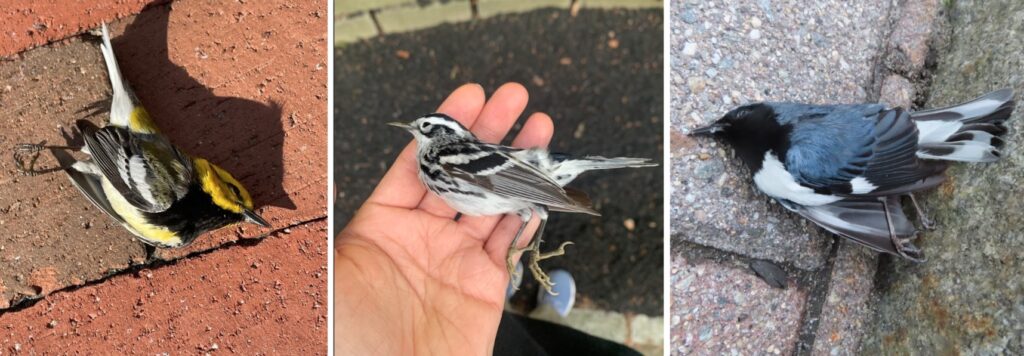
We’ve officially reached the end of Bird Safe Maine’s Spring 2023 collision monitoring season, our sixth season of monitoring for collisions around Portland. This season our team saw its greatest number of volunteers monitoring to date: 45 volunteers contributed to monitoring over the course of two months. Every day from April 18 – May 31 between 5:00-5:30 am, a group of volunteers met at Ocean Gateway to walk a route around Portland looking for birds who were dead or stunned from window collisions.
Because of the large turnout of volunteers, often volunteers were able to split into two groups and walk in opposite directions to cover more ground faster. Though the majority of volunteers walked 2-3 mornings out of the season, others varied between 1-10 walks depending on their time availability. Some started even earlier in the morning to try to truly catch the dawn! We are so thankful for the passion and commitment of our volunteers to this difficult work.
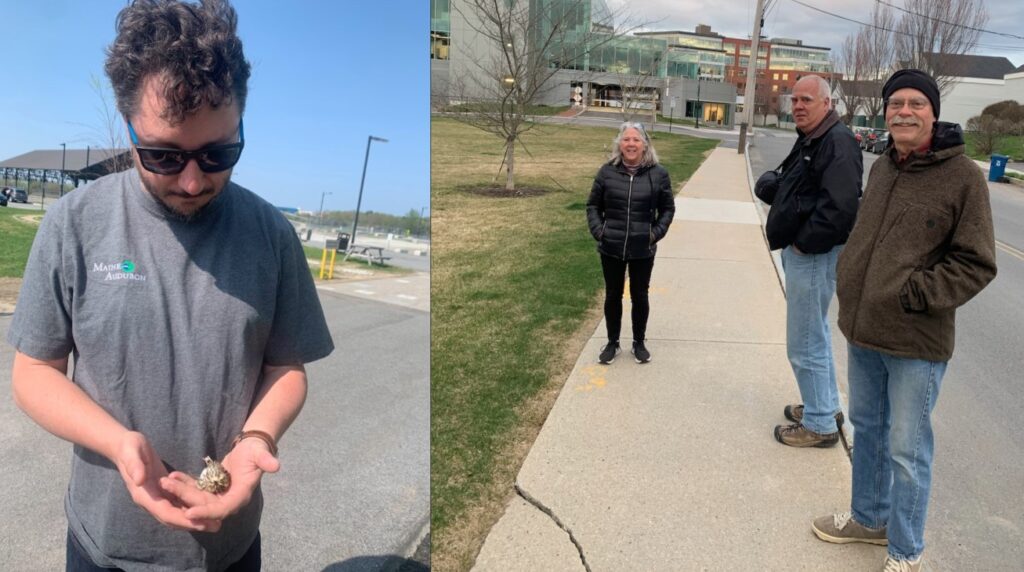
In total, 60 collisions were recorded for Spring 2023 at 27 locations. This is double the collisions recorded last Spring, which is consistent with the pattern we’ve seen over the course of this study. Each Fall and Spring has seen an increase from the last, resulting in an overall increasing trend in recorded collisions per year (Figure 3).
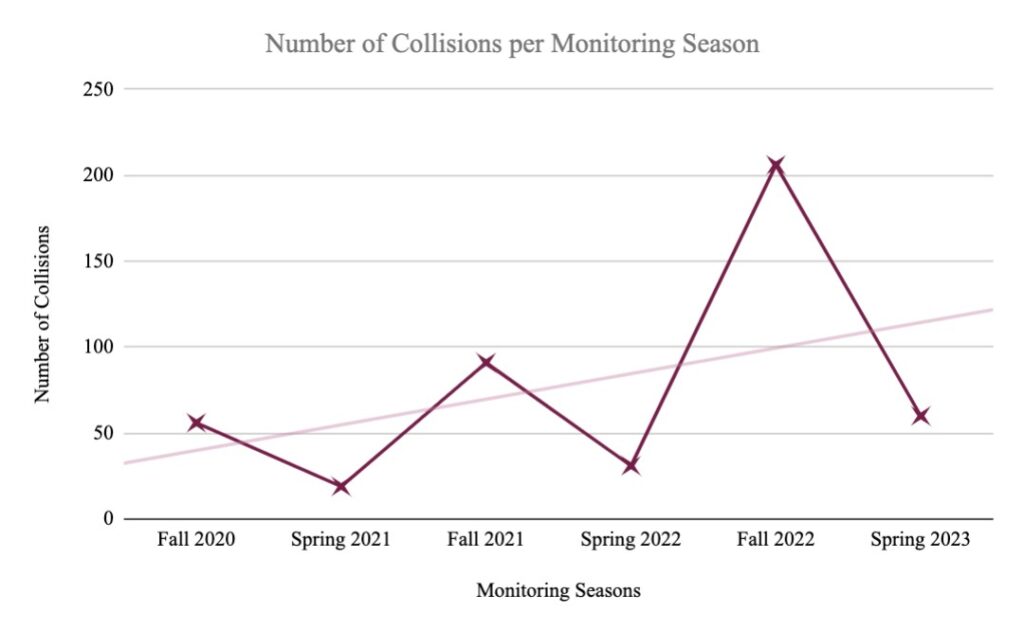
Almost 40% of all collisions were found at one building located at 261 Commercial St. The largest threat at this location is a multiple-story façade of mirrored glass placed in an alleyway facing the tallest planted trees in Portland (Figure 4). Maine Audubon & Bird Safe Maine are in contact with the managers of this property, and they are genuine in their attempts to address strikes at the site.
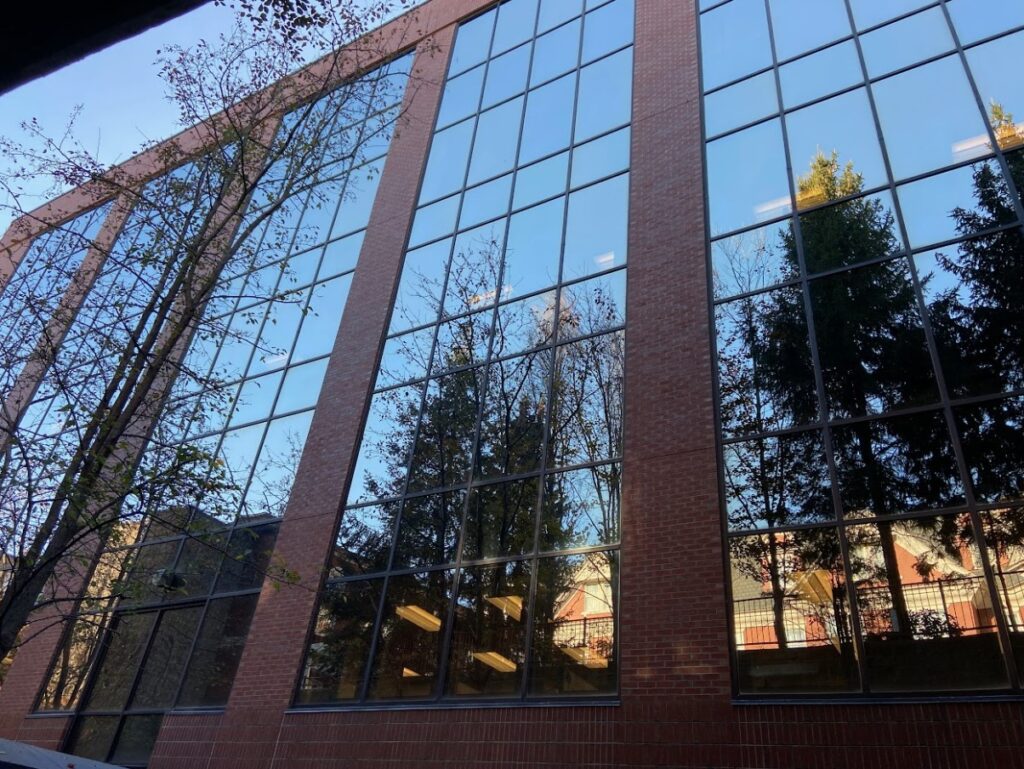
Out of these collisions, 100% of individuals whose age we could determine were adults. This is unsurprising as most birds in Maine during the spring are adults (both migratory and resident) initiating their breeding season. Interestingly, the ratio of males to females represented in the data this season was skewed towards males. Usually we don’t find sex to be a consequential factor. This is most likely due to the fact that we were only able to determine sex in 14/60 of the individuals, but there has also been scientific discussion as to whether male display and aggression during breeding season could contribute to higher numbers of male collisions.
21 species from 9 family groups were represented in the data. The highest represented group by more than six times the second highest represented group were White-throated Sparrows (41.7% of collisions). The three most affected species after White-throated Sparrows were: Common Yellowthroats (6.7%), Ovenbirds (3.7%), and Magnolia Warblers (3.3%). Although White-throated Sparrows can be found year-round along Maine’s coast, the rest of the highest represented species were breeding season migrants. It is clear that insectivorous songbirds are the most common collision species, but this is a far-reaching problem that affects a wide diversity of birds (Figure 5-11).
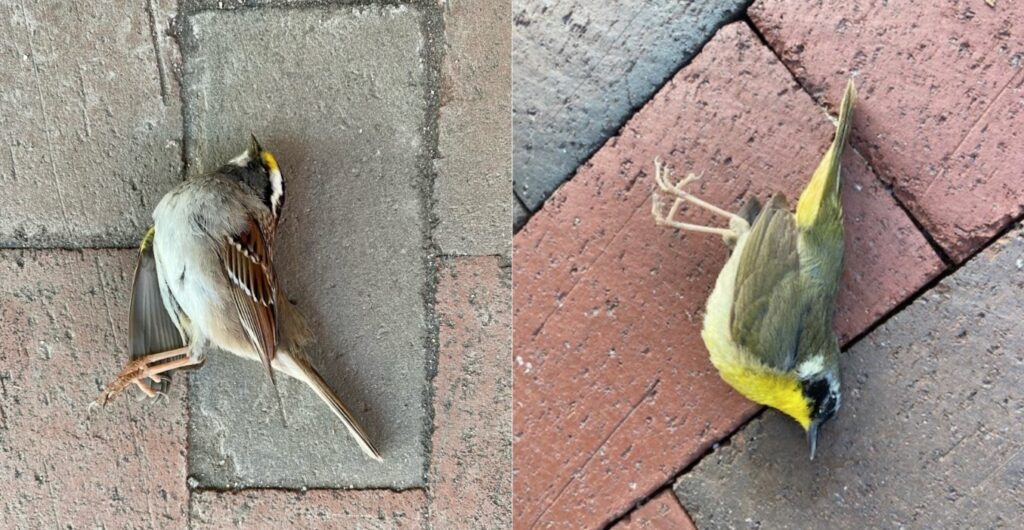
Unfortunately, 50% of the recorded collisions were found dead or were known to have died within 24 hours of impact. The other 50% were found stunned or seen striking, both situations that have a high chance of eventual death for the bird. There is no reducing the impact of collisions without changing the way we design legislation and buildings in our community.
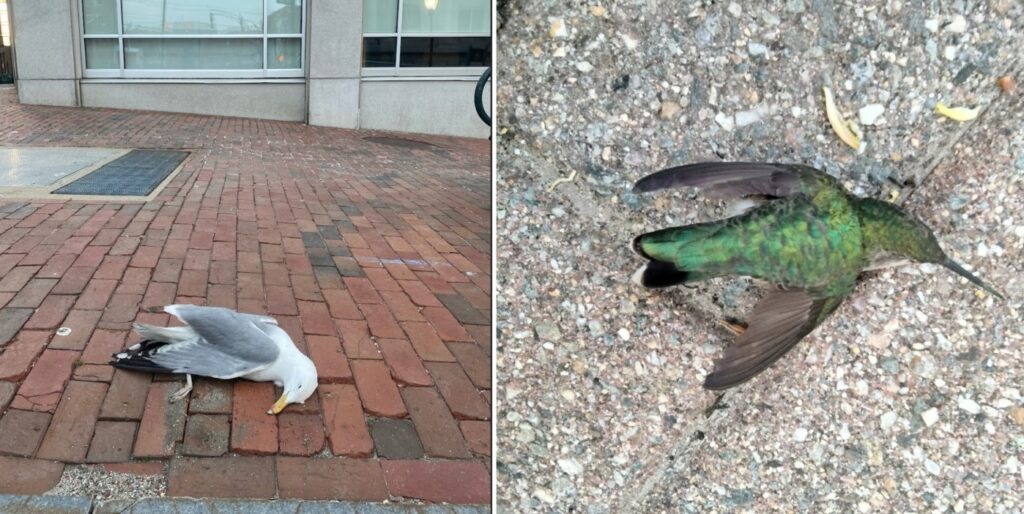

Although the data we have recorded over the years is upsetting and the increasing trend of collisions even more alarming, we have high hopes for the use of this data to make positive change for wildlife in our communities. As we celebrate the passing of LD 670: An Act to Protect Birds in the Construction, Renovation and Maintenance of Public Buildings in Maine and continue to move forward with the development of a Bird Safe Ordinance in the city of Portland, we also celebrate the efforts of the Bird Safe Team and our incredible volunteers whose data collection over the years have began to create real change in our home state.
